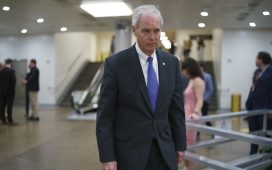For the quarter, Lexus sold 29,438 RX midsize crossovers — more than twice the volume of its next-bestselling model, the NX compact crossover, at 13,204.
Bob Carter, head of sales for Toyota Motor North America, said the strong third-quarter performance from Lexus was driven by its ability to stabilize production of high-volume models, including the RX and NX and the ES sedan, and get inventory for dealers to sell.
“We knew there was business out there, and we wanted to support our dealers,” Carter said. “We’re pretty confident right now. I’m not in a race, and I’m not going to do abnormal acts to win a trophy, but we’re going to land 265,000, maybe even 270,000, Lexus sales in a really, really trying year, and that’s important for us, and it’s really important for our dealers.”
Karl Brauer, executive analyst with iSeeCars.com, says Lexus may be getting a second look from luxury buyers nervous about the security of their paycheck and the state of their stock portfolio.
“Some of the people who would have bought a Mercedes or a BMW might be saying, ‘I’m still going to buy a vehicle, but I’m going to cut back and buy something that costs less upfront,’ ” Brauer said.
Overall, U.S. luxury sales dipped 6.5 percent to 519,227 cars and light trucks in the third quarter, slightly better than the entire industry’s 9.5 percent decline.
The premium segment also outperformed the overall industry for the year to date — reporting a nine-month sales decline of 14 percent, compared with the overall industry’s 18 percent slide. More than half of the 15 luxury brands outsold the industry through September.
But uncertainty around the November presidential election and the long-term economic fallout from the pandemic will weigh on the luxe sector’s sales outlook for the remainder of 2020, said Akshay Anand, executive analyst at Kelley Blue Book.
“Going forward, the name of the game for luxury will be consumer sentiment and the economy,” Anand said. “Things seem to be humming along, but that can and may change at a moment’s notice.”
Propelled by demand for its core crossovers, Mercedes-Benz eked out a mere 61-vehicle sales lead over rival BMW in the third quarter.
Mercedes delivered 69,631 vehicles, excluding commercial vans, down 9.4 percent from a year earlier. The GLC compact crossover led the results, with 11,428 sales, followed by the GLE midsize crossover, with sales of 10,858.
BMW sold 69,570 vehicles in the third quarter, down 16 percent from a year earlier. BMW’s quarterly sales were buoyed by additions to the 2 Series and 8 Series sedan lineups.
Lexus’ inventory also benefited from a narrower portfolio of products and options packages than those of its German rivals, said Tyson Jominy, vice president of the Power Information Network at J.D. Power. The top three model lines accounted for nearly three-quarters of Lexus’ third-quarter sales, while the top three Mercedes lines delivered less than half of its sales.
“Think of how many options and customizations BMW and Mercedes offer and the additional inventory that requires,” Jominy said. “Tighter inventory may only force a Lexus customer into a second color choice or buying up one package. But it could require bigger trade-offs” for a Mercedes customer.
Among other luxury brands, Tesla saw an estimated 17 percent increase in third-quarter sales — delivering an estimated 64,000 vehicles. With an estimated 196,000 cars and crossovers sold through September, the California electric vehicle maker commanded about 14 percent of the segment, very close to market share leader Mercedes, with 14.1 percent.
Audi rounded out the top five, reporting 47,893 sales in the third quarter, down 16 percent from a year earlier. Infiniti suffered the largest sales dive in the segment, tumbling 30 percent 17,367.
Porsche Cars North America reported quarterly U.S. sales of 15,548 vehicles, a 5 percent uptick from the same time last year.
Larry P. Vellequette contributed to this report.







